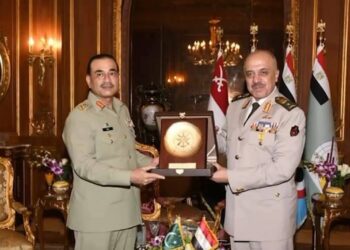New Study Reveals Unchecked Flow of Surplus Weapons in the Region
Geneva/Kabul/Islamabad — A newly released study has shed light on a growing concern that continues to threaten regional stability: the persistence of an informal arms trade in Afghanistan and Pakistan involving weapons left behind by Soviet and NATO forces. Despite official crackdowns, these arms remain widely available, raising alarms over national security and fueling terrorist activities across borders.
The report, titled “Documenting the Availability of Arms in Afghanistan”, was published by the Geneva-based Small Arms Survey, an independent research project that specializes in documenting the proliferation of weapons in conflict zones. The findings highlight that weapons and ammunition from previous military occupations are still circulating freely in eastern Afghanistan and the adjoining tribal areas of Pakistan, despite Taliban efforts to consolidate control over the arms trade.
Background: Legacy of Foreign Military Presence
Over the past four decades, Afghanistan has seen successive foreign interventions that left behind large quantities of military hardware. The Soviet Union’s invasion in 1979 and the subsequent NATO-led military intervention post-9/11 introduced vast caches of weapons, ranging from small arms and light weapons (SALW) to more advanced systems.
When the United States and NATO forces withdrew in 2021, billions of dollars’ worth of military equipment—originally supplied to the Afghan National Defense and Security Forces (ANDSF)—were either abandoned or seized by the Taliban following their swift takeover. While the Taliban have since tightened control over major arms stockpiles, informal and black-market trade in arms continues to flourish, often with the knowledge or indirect support of low-level officials.
Report Findings: A Lucrative and Dangerous Market
The Small Arms Survey conducted field investigations between 2022 and 2024 in key arms trade hotspots, including Nangarhar, Kunar, and Paktia provinces in Afghanistan, and border regions in Pakistan’s Khyber Pakhtunkhwa and Balochistan. Researchers found an alarming availability of:
- Soviet-era Kalashnikov rifles
- NATO-supplied M4 carbines and M16 rifles
- Ammunition for both Soviet and NATO calibers
- Weapon accessories such as scopes, tactical vests, and night vision devices
According to the report, prices of weapons have stabilized, indicating a steady and sustainable supply chain. These arms are often resold through clandestine markets or directly supplied to militant groups, including the Tehreek-e-Taliban Pakistan (TTP) and al-Qaeda, both designated as terrorist organizations by the United Nations Security Council (UNSC).
Taliban’s Role: Tighter Controls but Loopholes Remain
Although the Taliban regime has implemented strict policies to regulate arms possession among civilians and private militias, the report suggests corruption and local-level complicity continue to facilitate the black-market trade. In many cases, weapons are smuggled with the tacit approval of local commanders, who turn a blind eye in exchange for bribes or political allegiance.
The Taliban’s reliance on former military stockpiles is further compounded by their interwoven relationships with regional terrorist networks, creating a complex ecosystem where arms circulate with little to no oversight.
Regional Implications: A Threat to National and International Security
The continued availability of military-grade weapons in unregulated markets poses significant risks:
- Destabilization of Border Regions: Cross-border smuggling routes have been revitalized, fueling violence in tribal areas and making it difficult for Pakistan to maintain control over its western frontier.
- Empowerment of Militant Groups: Groups like the TTP and Islamic State Khorasan (ISIS-K) are reportedly gaining access to advanced weaponry, allowing them to stage more sophisticated and deadly attacks.
- Threat to Counterterrorism Efforts: The lack of accountability regarding weapon stockpiles undermines regional and international counterterrorism operations and erodes trust between stakeholders.
- Increased Civilian Risk: Easy access to arms has led to increased incidents of violence, extortion, and tribal clashes in both Afghanistan and Pakistan.
Efforts to Curb Arms Trafficking: Too Little, Too Late?
While the Taliban claim to have reined in much of the informal arms trade, global observers remain skeptical. The international community has urged the Taliban to increase transparency and cooperate with watchdog organizations, but such measures have yet to produce tangible results.
The Pakistani government, too, faces immense pressure to crack down on arms trafficking within its borders. However, tribal traditions, geographical challenges, and limited resources make it a daunting task.
Some analysts suggest a regional arms control framework could be the way forward—an initiative involving Afghanistan, Pakistan, Iran, China, and Russia, with backing from the UN and international NGOs. But political instability and deep-rooted mistrust between governments have made progress difficult.
Conclusion: A Persistent Legacy of Conflict
More than three years after the Taliban’s return to power and decades since the first foreign boots landed in Afghanistan, the ghosts of past conflicts continue to haunt the region. The unchecked circulation of weapons left behind by foreign militaries highlights not just the failure of disarmament strategies, but also the urgent need for coordinated international action.
Without effective intervention, the informal arms trade is likely to grow even more sophisticated—posing a grave threat not only to regional peace but also to global security.

























